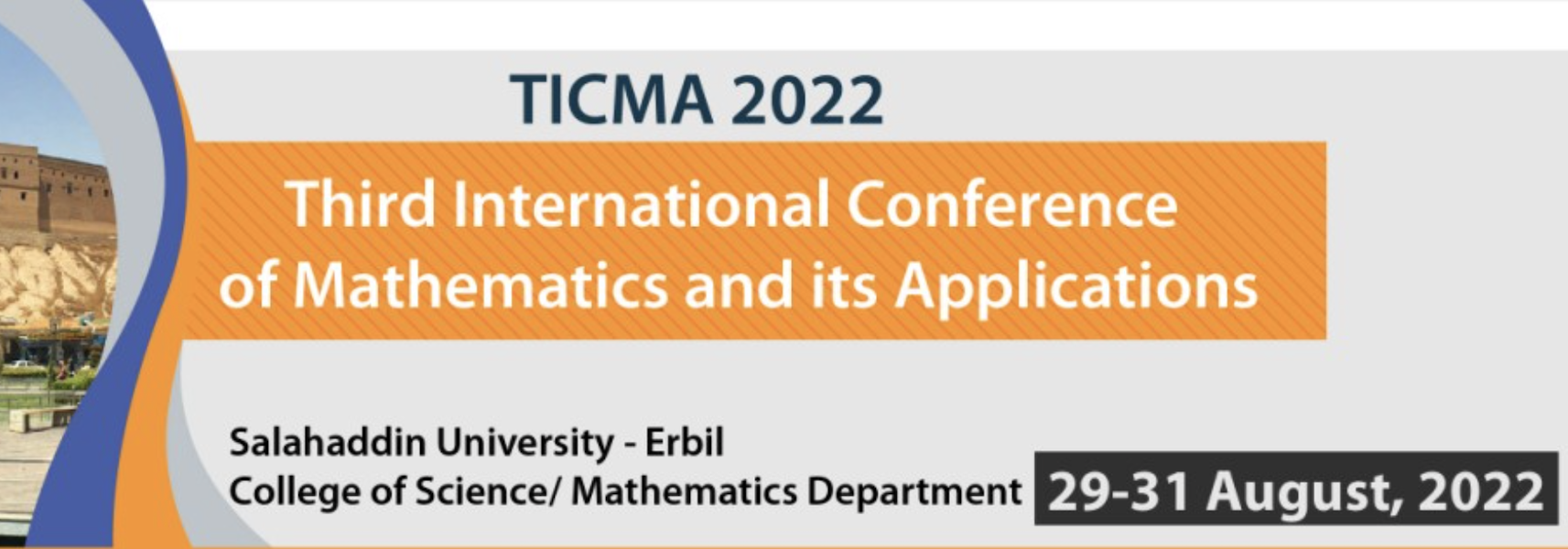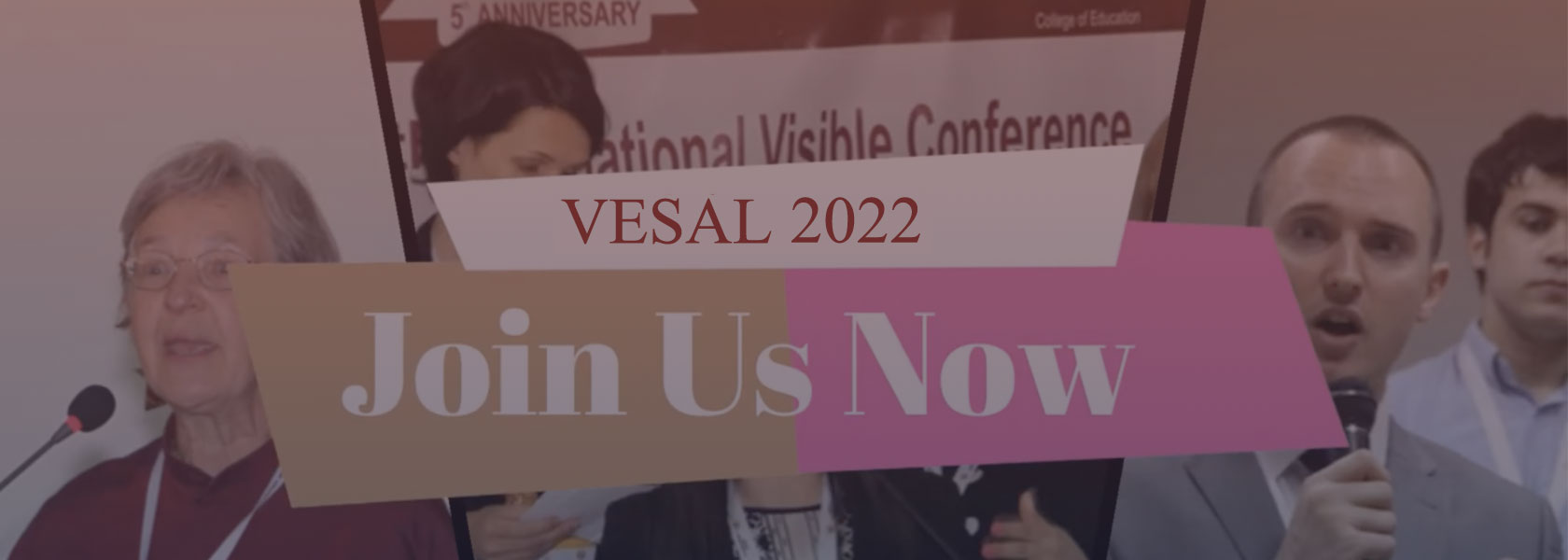
1, a) Rizgar H. Salih and Bashdar M. Mohammed 2, b)
1,2 Department of Mathematics, College of Basic Education,
University of Raparin, Raniyah, Kurdistan Region – Iraq.
DOI: https://doi.org/10.31972/ticma22.11
Abstract
This paper is devoted to studying the stability of the unique equilibrium point and the occurrence of the Hopf bifurcation as well as limit cycles of a three-dimensional chaotic system. We characterize the parameters for which a Hopf equilibrium point takes place at the equilibrium point. In addition, the system has only one equilibrium point which is E_0=(0,0,0). It was proved that E_0 is asymptotically stable and unstable when α<(-13)/7 and α>(-13)/7, respectively. Moreover, for studying the cyclicity of the system, two techniques are used which are dynamics on the center manifold and Liapunov quantities. It was shown that at most two limit cycles can be bifurcated from the origin. All the results presented in this paper have been verified by a program via Maple software.
Key Words: Chaotic System, Hopf Bifurcation Analysis, equilibrium point.

ω_p-Open and ω_p-Closed Functions
Halgwrd Mohammed Darwesh1, a And Shagull Hossein Mahmood2, b
1,2 Department of Mathematics, College of Science, University of Sulaimani,
46001 Sulaimani, Kurdistan Region, Iraq
a) halgwrd.darwesh@univsul.edu.iq
b) shagull.mahmmod@univsul.edu.iq
DOI: https://doi.org/10.31972/ticma22.12
Abstract
In this 𝑤𝑜𝑟𝑘, we study and define two new concepts of functions named and functions by using the concepts of and ϲ𝑙𝑜𝑠𝑒𝑑 sets. The concept of function strictly located between both the concepts of and functions. We obtain a few properties of these functions, however, the connections between them are examined.
Key Words: ω_p-ϲlosed set, ω_p-open set, ω_p-continuous function, ω_p-closed function,ω_p-open function.

Abdulghafoor Jasim. Salim1 Ali A. Asmael2
1,2Department of Mathematics, college of computer science and Mathematics, University of Mosul.
DOI: https://doi.org/10.31972/ticma22.13
Abstract
Key Words: Coding Theory, Projective Space, finite field.

Hajir Hayder Abdullah1,a) and Nada Yassen Kasm Yahya2,b)
1Department of Mathematics, College of Education for Pure Science, University of Mosul, Mosul, Iraq
2Department of Mathematics, College of Education for Pure Science, University of Mosul, Mosul, Iraq
DOI: https://doi.org/10.31972/ticma22.14
Abstract
Key Words: Coding Theory, Projective Space, finite field.

Zhian M. Mahmood1,a) and Nejmaddin A.Sulaiman1,b)
1Department of Mathematics, College of Education, Salahaddin University, Erbil, 44001, Iraq
DOI: https://doi.org/10.31972/ticma22.15
Abstract
In this paper Standard Error of Mean (SEM), as a new technique, is used for transforming multi-objective linear programming problems (MOLPPs) to the single objective linear programming problems (SOLPPs). To this end, an algorithm has been proposed and suggested to solve MOLPPs, which have been tested through numerical examples by employing Excel Solver. However, the study compares the results of other techniques like (Chandra Sen, Optimal Average of Minimax and Maximin, New Arithmetic Average, New Geometric Average, New Harmonic Average, and Advanced Transformation) with the results of this new technique SEM. The numerical results indicate that a new technique in general is promising.
Key Words: Multi-Objective Linear Programming, Geometric Average, Harmonic Average.

1) Department of Mathematics, College of Science, University of Sulaimani, Sulaymaniyah 46001, Iraq.
2) Department of Mathematics, College of Education, University of Garmian, Kalar 46021, Iraq.
a) pishtiwan.sabir@univsul.edu.iq
DOI: https://doi.org/10.31972/ticma22.16
Abstract
This paper investigates the study of -complex fuzzy sets. The -complex fuzzy set, where is a completely distributive lattice, is a generalization of the complex fuzzy set. The fundamental set theoretic operations on -complex fuzzy sets are discussed properly, including -complex fuzzy complement, union and intersection. New procedures are presented to combine the novel concepts of -complex fuzzy -norms and -conorms and look into the conditions that lead to a comparable representation theorem. We have used the axiomatic method, in the sense that our underlying assumptions, especially about, are abstract; it can thus be ascertained to what extent our results apply to some new problem. On the other hand, our method shows that if mathematics, as we use it, is consistent, so is fuzziness, as we formulate it.
Key Words: : Fuzzy set; Complex fuzzy set; -complex fuzzy set; Fuzzy -norm; Fuzzy -conorm.

THE USE OF ARISTOTLE’S CATEGORIES IN WORD DEFINITIONS IN ESL/EFL CONTEXTS
1Recep Bilgin, 2Yunus Yildiz
1,2Department of Languages, Education Faculty, Tishk International University, Iraq
Emails: 1recep.bilgin@tiu.edu.iq, 2yunus.yildiz@tiu.edu.iq
Correspondence: recep.bilgin@tiu.edu.iq
DOI: https://doi.org/10.31972/vesal12.12
Abstract
The categories introduced to the world of science by Aristotle basically express the different situations necessary for the definition of a noun. According to Aristotle, who put forward 9 different categories related to the noun, the features that will distinguish an object from others are determined by these categories. In its definition, the noun is expressed as substance, while the other categories are determined as accidents. In addition, he mentioned 4 different causes of the existence of an object. All these are effectively used for word definitions, especially in dictionaries. The concepts of universal, which are related to the word, and differentia, which distinguish the word from others in its own kind, are the concepts that dictionaries especially focus on. Knowing and using these concepts correctly by teachers will help students understand better. This study was conducted to confirm this aim. In this study, 15 teachers were asked to define the given words and then the problematic situations in the definitions were mentioned to the teachers. Afterwards, the issue of categories and what universal and differentia are, were explained to the teachers and asked to redefine the words. In this case, it has been observed that teachers were more successful. In addition, the word definitions were given to the students, and they were asked what the word was. The rate of students knowing the words correctly was found to be sixty-two percent.
Key Words: Aristotle, Categories, Word Definitions, ESL / EFL context

1Bunyamin Celik, 2Recep Bilgin
1,2Department of Languages, Education Faculty, Tishk International University, Iraq
Emails:1bunyamin.celik@tiu.edu.iq, 2recep.bilgin@tiu.edu.iq
Correspondence: bunyamin.celik@tiu.edu.iq
DOI: https://doi.org/10.31972/vesal12.11
Abstract
Specific learning disability is a psychological and mental disorder that prevents students from learning like normal students, especially in the primary school period. While other people often see this condition of students as a mental problem, it is treatable. They generally do not have any problems with their intelligence, and it is possible to educate them so as to be normal individuals because they are normal indeed. The application of the curriculum suitable for these students is very important to overcome the problem. Although they may exhibit some behaviours that are not compatible with their age because of slow improvement of emotional quotient, they may change into normal individuals in time. It is very common for the teachers to behave these students as if they are mentally retarded. In fact, the case is quite different. In this study, we applied a questionnaire to detect how aware the teachers are of their situation and how they approach these students. The aim of the study is to show that many teachers have the false idea that these students as if they were mentally retarded and there is nothing to do for them. A Likert-scale questionnaire was applied, and the teachers’ opinions were taken through it. The questions are about how aware the teachers are of these students and if they think these students are mentally retarded. In total, 789 teachers participated in the questionnaire, and 69% of them think that these students have mental problems.
Key Words: Specific Learning Difficulty, Dyslexia, Intelligence

The Significance of Non-Verbal Communication in Oral Translation
Ahmed Qader Mohamedamin
Kurdistan Higher Council of Medical Specialties
Presidency Office
International Relations
DOI: https://doi.org/10.31972/vesal12.09
Abstract
This research aims to discover a different definition of interpretation and to prove that non-verbal communication is a fundamental part of interpretation. Therefore, an interpreter without a good knowledge of non-verbal communication cannot be a complete interpreter. The interpretation process is not only the process of meaning transference from one language to another; it is also the transference of the meaning of non-verbal communication such as; facial expression, tone of voice, eye contact etc.
The problem of this study is that most interpreters do not take non-verbal communication into consideration, and they do not have enough information about it. This will be proved through an incident occurred while USA president Joe Biden delivered a speech in April this year for which all details of the reason illustrated clearly. The lack of knowledge about non-verbal communication can cause problems while interpreting or analyzing a speech of a president or a government official or speaker. It leads to misunderstanding and misinterpretation that might be embarrassing for the interpreter and the organization or the Media network they are working for.
Non-verbal communication can be used in different forms, each illustrating or replacing a specific part of verbal communication. It contains many more figures than anyone might think in the first place. So non-verbal signs/Communications play a significant role in the interpretation. It is the essential base in the interpretation process; interpreters have to concentrate on these elements to carry out a successful interpreting process and achieve great interpretation results.
The data of this study is mainly taken from books and articles about translation, Interpretation and Nonverbal Communication. The exemplification is primarily drawn from English sources, books and articles that have partly been opted out depending on self-experience. Therefore, it is analyzed through a questionnaire in which eighteen professional translators/interpreters are asked seven questions regarding the importance of Non-Verbal Communication in Oral Translation. In conclusion, the outcome of this manuscript reiterated that interpretation and Non-Verbal Communication complete each other; the latter cannot be perfect without the former.
Keywords: Oral Translation, Non-Verbal Communications, Interpretations, Facial Expression, Interpretation.

Assist. Prof.Dr. Lanja A. Dabbagh Wrya Izzadin Ali Assist. Prof. Dr.
English Department, College of Languages, Salahaddin University- Hawler
Wyra.ali@su.edu.krd lanja.dabbagh@su.edu.krd
DOI: http://doi.org/10.31972/vesal12.08
Abstract
Interpreting as a profession has become the center of interest and focus for many linguists, translation scholars, translators, and professionals. Interpreting has played a vital role in bridging the gap and maintaining relationships among people of different languages. The output of interpreting, unlike written translation is entirely oral leaving behind no written proof. Interpreting is an activity or a process which consists of the facility of oral and sign language communicated either consecutively or simultaneously between two or more speakers who are not speaking the same language. Interpretation is the act of transposing a message from one language to another immediately in real time.
The study sheds light mostly upon non- linguistic factors in the process of interpreting which can be of no less important than the linguistic ones. The aim of the study is to provide an overview of interpreting in general with a detailed description of the non- linguistic strategies or skills from the perspective of interpreting process. Bearing these in tactics in mind, the interpreter tackles the interpreting problems and difficulties in a more skillful way.
Key Words: Non- Linguistic Aspects, Interpreting, Paralinguistics Aspects, Verbal and non- verbal messages.
